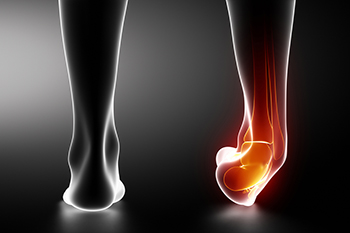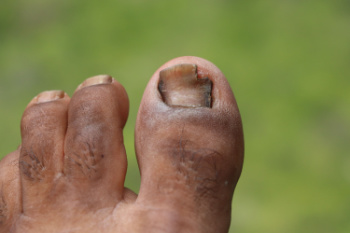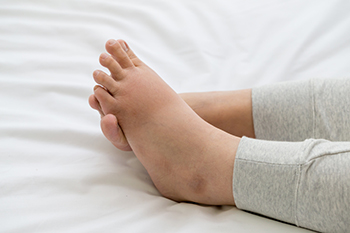Items filtered by date: May 2025
How Wearing High Heels Affects the Feet

Wearing high heels frequently can lead to a range of foot problems, resulting from the unnatural angle they force the foot into. Elevating the heel shifts body weight forward, placing excessive pressure on the ball of the foot and toes. This added strain may increase the risk of bunions, hammertoes, and thickened skin such as corns or calluses. Over time, the altered alignment of the ankle and foot may also lead to inflammation of the Achilles tendon or the plantar fascia, which runs along the sole of the foot. Other complications from wearing high heels include Morton’s neuroma, a painful thickening of nerve tissue near the toes, or Haglund’s deformity, a bony bump on the back of the heel. A podiatrist can evaluate the damage caused by high heels and offer treatment that includes custom orthotics, joint pain injections, or surgery if necessary. If you have foot problems related to wearing high heels, it is suggested that you schedule an appointment with a podiatrist for appropriate treatment.
High heels have a history of causing foot and ankle problems. If you have any concerns about your feet or ankles, contact one of our podiatrists from Pima Foot and Ankle Surgery. Our doctors can provide the care you need to keep you pain-free and on your feet.
Effects of High Heels on the Feet
High heels are popular shoes among women because of their many styles and societal appeal. Despite this, high heels can still cause many health problems if worn too frequently.
Which Parts of My Body Will Be Affected by High Heels?
- Ankle Joints
- Achilles Tendon – May shorten and stiffen with prolonged wear
- Balls of the Feet
- Knees – Heels cause the knees to bend constantly, creating stress on them
- Back – They decrease the spine’s ability to absorb shock, which may lead to back pain. The vertebrae of the lower back may compress.
What Kinds of Foot Problems Can Develop from Wearing High Heels?
- Corns
- Calluses
- Hammertoe
- Bunions
- Morton’s Neuroma
- Plantar Fasciitis
How Can I Still Wear High Heels and Maintain Foot Health?
If you want to wear high heeled shoes, make sure that you are not wearing them every day, as this will help prevent long term physical problems. Try wearing thicker heels as opposed to stilettos to distribute weight more evenly across the feet. Always make sure you are wearing the proper shoes for the right occasion, such as sneakers for exercising. If you walk to work, try carrying your heels with you and changing into them once you arrive at work. Adding inserts to your heels can help cushion your feet and absorb shock. Full foot inserts or metatarsal pads are available.
If you have any questions, please feel free to contact our offices located in . We offer the newest diagnostic and treatment technologies for all your foot care needs.
Treatment Options for a Torn Ankle Ligament

An ankle sprain often involves a torn ligament, which can cause swelling, pain, and instability in the joint. Ankle sprains usually occur when the foot twists or rolls in an unnatural way, overstretching the ligaments that support the ankle. Injuries range from a partial tear to a complete rupture. While mild sprains may heal with supportive care, more serious ligament damage often requires a brace or walking boot to stabilize the area. In severe cases, surgery may be needed to reattach the torn ankle ligament and restore joint function. A podiatrist can also assess alignment and foot structure to help prevent future sprains. Recovery may involve a gradual return to movement and targeted exercises under medical supervision to avoid further injury. Without proper care, a torn ligament can lead to chronic instability or recurring ankle problems. If you have incurred a serious ankle sprain, it is suggested that you make an immediate appointment with a podiatrist for appropriate treatment.
Ankle sprains are common but need immediate attention. If you need your feet checked, contact one of our podiatrists from Pima Foot and Ankle Surgery. Our doctors can provide the care you need to keep you pain-free and on your feet.
How Does an Ankle Sprain Occur?
Ankle sprains take place when the ligaments in your ankle are torn or stretched beyond their limits. There are multiple ways that the ankle can become injured, including twisting or rolling over onto your ankle, putting undue stress on it, or causing trauma to the ankle itself.
What Are the Symptoms?
- Mild to moderate bruising
- Limited mobility
- Swelling
- Discoloration of the skin (depending on severity)
Preventing a Sprain
- Wearing appropriate shoes for the occasion
- Stretching before exercises and sports
- Knowing your limits
Treatment of a Sprain
Treatment of a sprain depends on the severity. Many times, people are told to rest and remain off their feet completely, while others are given an air cast. If the sprain is very severe, surgery may be required.
If you have suffered an ankle sprain previously, you may want to consider additional support such as a brace and regular exercises to strengthen the ankle.
If you have any questions please feel free to contact our offices located in . We offer the newest diagnostic tools and technology to treat your foot and ankle needs.
Are Bunions Affecting Your Everyday Life?
When Fungus Takes Over Your Toenail

Toenail fungus often starts as a small change in color or texture. The nail may look yellow, white or brown, and become thick, brittle, or crumbly over time. It can spread to other nails and may cause odor or discomfort. Fungal infections thrive in warm, moist places such as sweaty shoes or public showers. Early treatment can stop it from getting worse. Creams may help in mild cases, but deeper infections often need prescription medication. Keeping nails trimmed, dry, and clean helps prevent infection. Avoid walking barefoot in shared spaces and change socks often. Toenail fungus rarely goes away on its own. If your nail is changing in appearance or causing discomfort, it is suggested you see a podiatrist for professional treatment.
If left untreated, toenail fungus may spread to other toenails, skin, or even fingernails. If you suspect you have toenail fungus it is important to seek treatment right away. For more information about treatment, contact one of our podiatrists of Pima Foot and Ankle Surgery. Our doctors can provide the care you need to keep you pain-free and on your feet.
Symptoms
- Warped or oddly shaped nails
- Yellowish nails
- Loose/separated nail
- Buildup of bits and pieces of nail fragments under the nail
- Brittle, broken, thickened nail
Treatment
If self-care strategies and over-the-counter medications does not help your fungus, your podiatrist may give you a prescription drug instead. Even if you find relief from your toenail fungus symptoms, you may experience a repeat infection in the future.
Prevention
In order to prevent getting toenail fungus in the future, you should always make sure to wash your feet with soap and water. After washing, it is important to dry your feet thoroughly especially in between the toes. When trimming your toenails, be sure to trim straight across instead of in a rounded shape. It is crucial not to cover up discolored nails with nail polish because that will prevent your nail from being able to “breathe”.
In some cases, surgical procedure may be needed to remove the toenail fungus. Consult with your podiatrist about the best treatment options for your case of toenail fungus.
If you have any questions please contact our offices located in . We offer the newest diagnostic and treatment technologies for all your foot and ankle needs.
Common Foot Problems Caused by Pregnancy

Pregnancy brings many changes to the body, and the feet are no exception. One common issue is collapsed arches, caused by the added weight and the hormone relaxin, which loosens the ligaments in preparation for childbirth. This change can lead to flat feet and discomfort while walking or standing. Swelling in the feet, known as edema, occurs due to increased blood volume and pressure from the growing uterus on the veins, slowing blood return from the lower body. Foot pain is also frequent, often resulting from the combined effects of weight gain, altered posture, and hormonal changes. Additionally, cracked heels may develop because the skin can become drier during pregnancy. If you are experiencing foot concerns during your pregnancy, it is suggested that you consult a podiatrist who can offer effective relief tips.
Pregnant women with swollen feet can be treated with a variety of different methods that are readily available. For more information about other cures for swollen feet during pregnancy, consult with one of our podiatrists from Pima Foot and Ankle Surgery. Our doctors will attend to all of your foot and ankle needs.
What Foot Problems Can Arise During Pregnancy?
One problem that can occur is overpronation, which occurs when the arch of the foot flattens and tends to roll inward. This can cause pain and discomfort in your heels while you’re walking or even just standing up, trying to support your baby.
Another problem is edema, or swelling in the extremities. This often affects the feet during pregnancy but tends to occur in the later stages.
How Can I Keep My Feet Healthy During Pregnancy?
- Wearing orthotics can provide extra support for the feet and help distribute weight evenly
- Minimize the amount of time spent walking barefoot
- Wear shoes with good arch support
- Wear shoes that allow for good circulation to the feet
- Elevate feet if you experience swelling
- Massage your feet
- Get regular, light exercise, such as walking, to promote blood circulation to the feet
If you have any questions, please feel free to contact our offices located in . We offer the newest diagnostic and treatment technologies for all your foot care needs.

